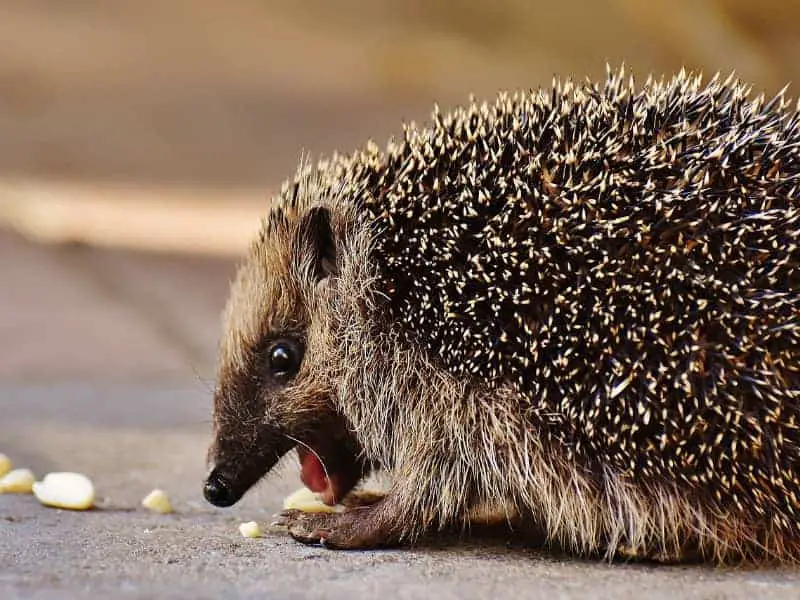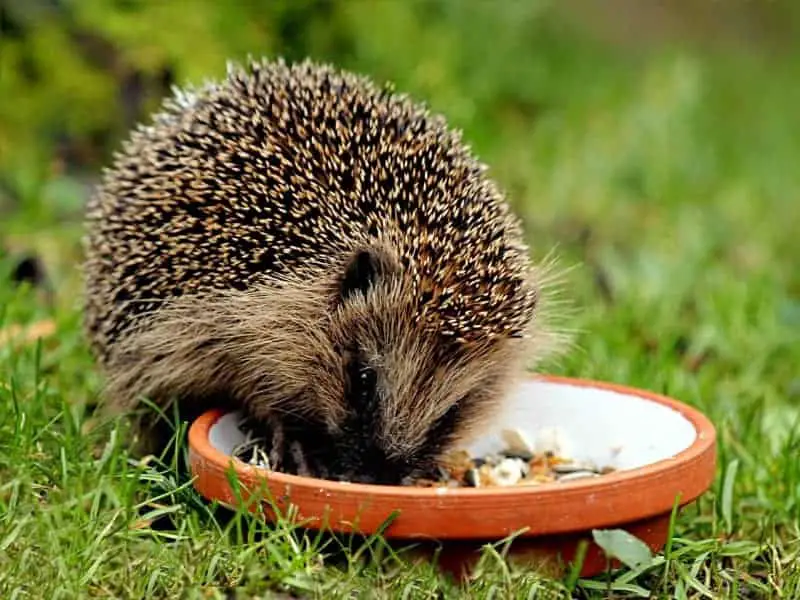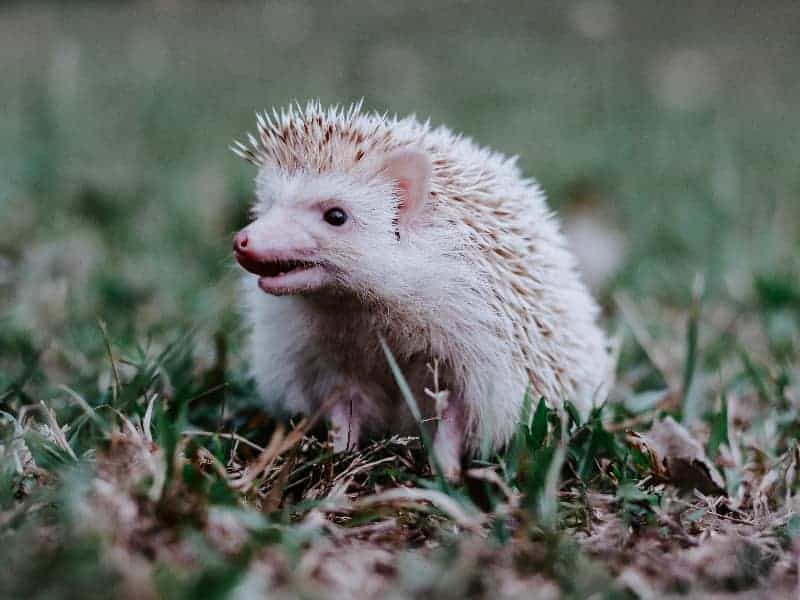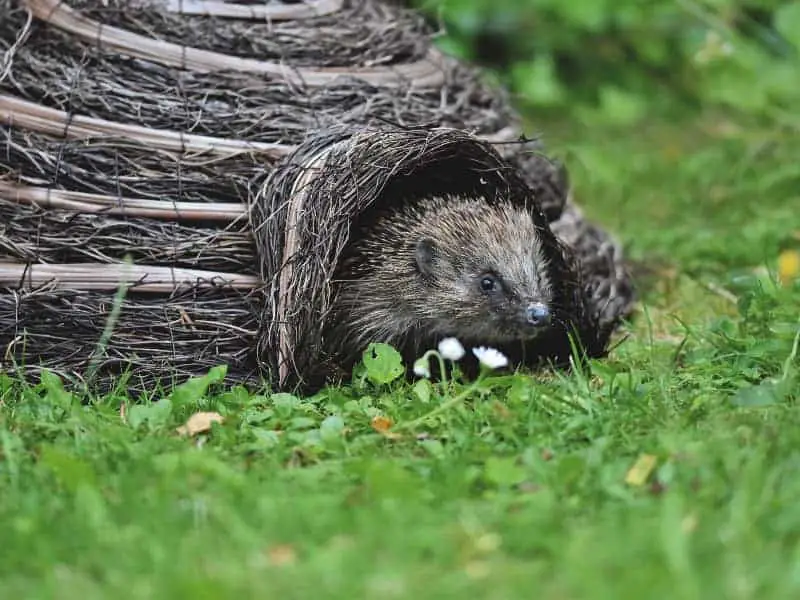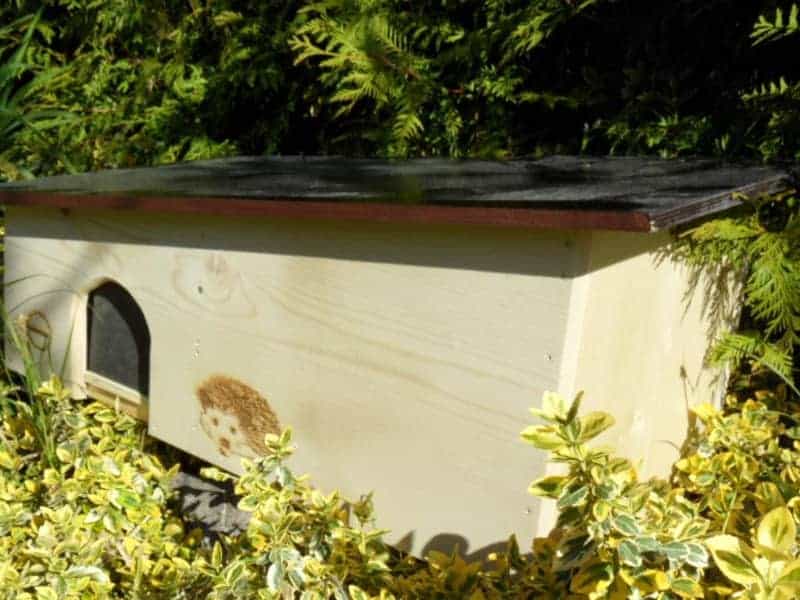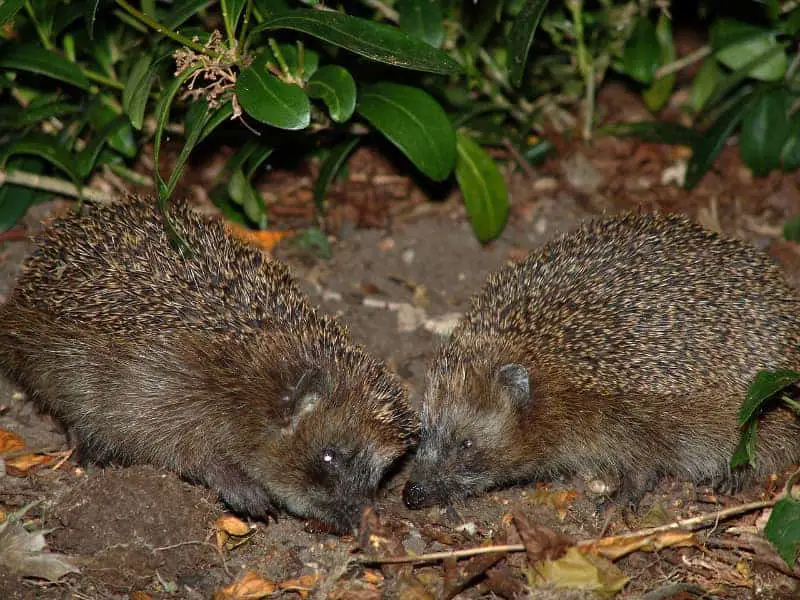
The hedgehog year
The life of hedgehogs is more or less exciting during the year. You are certainly not aware of how the hedgehog year goes. The little mammal experiences a lot during this period, which may also be dangerous.
The hedgehog year at a glance
Here you can clearly see what all happens to the little mammal in the course of a hedgehog year.
The awakening
If the outside temperatures are around 10 degrees Celsius for a longer period of time, it is time for the hedgehog to wake up from hibernation. This is usually the case between March and April. The male hedgehogs usually wake up a little earlier than the females. The actual process of waking up takes several hours. During this time, the small mammal needs a lot of energy.
The so-called "brown fat", which is stored in the area of the hedgehog's shoulders, is helpful here. The hedgehog's blood flow is around 5 times higher on awakening than during hibernation. At the same time, the heart and respiratory rates also increase significantly. In particular, the muscles in the legs begin to tremble strongly.
During hibernation, the hedgehog has lost about 30 % of its body weight, which it tries to compensate with an immediate search for food. At this early stage of the year there are hardly any insects to be found, so the hedgehog will be glad of a supplementary feeding from you. If you see the hedgehog foraging on a warm evening in April, you will notice that the spines on the sides of his body are shivering.
A visible sign that the hedgehog is emaciated. You can put a little cat food or other suitable food for him.
The pairing
Between April and August the mating season of the hedgehogs begins. The male animals now go in search of a mate. They can cover up to 5 km of distance per night. The males often become very careless due to the mating instinct. You can see this primarily when crossing roads.
Once the hedgehog has found his female, he begins to woo her fiercely. You can recognize it by heavy snorting, snorting, puffing and chugging. The male hedgehog circles the female over and over again. She, on the other hand, very often pushes him away with her head spines. This mating game is also very often called hedgehog carousel. Often this action lasts for hours. It is not even certain that it will lead to immediate success.
When the male has finally reached his mating goal and the female is pregnant, the two go their separate ways again. The female hedgehog is solely responsible for raising the young. Thus there is no hedgehog family as you might imagine. The female hedgehog is always a single parent.
The offspring
In most cases, the hedgehog babies are born in August. Some late-born even in September. The gestation period of hedgehogs is 35 days. The mother hedgehog then has between 2 and 7 young. At the time of birth the young hedgehogs already have the first soft and white colored spines. The young hedgehogs open their eyes and ears at the age of 2 weeks.
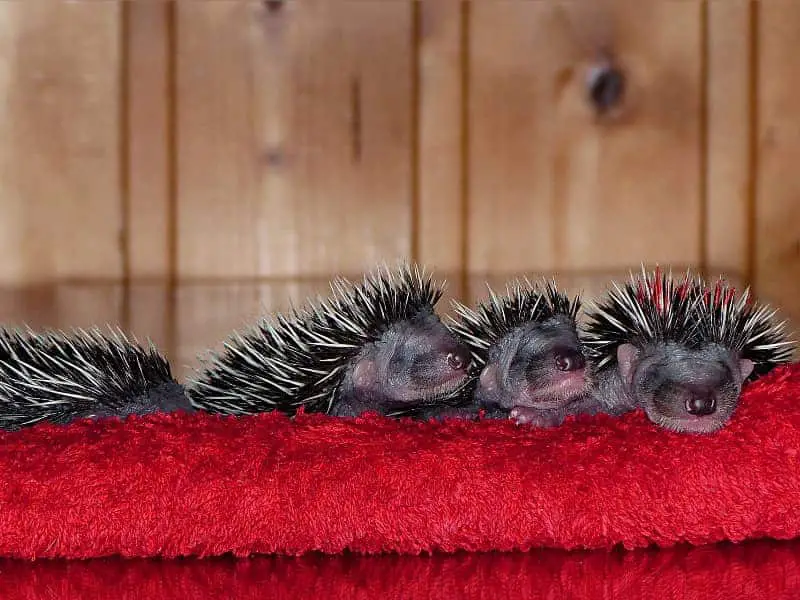
You will see the little hedgehogs after 3 weeks at the earliest. In the dark they then undertake the first excursions with their mother. In very warm regions in Germany you will often see the first baby hedgehogs in June or July. Then a second litter from the mother cannot usually be ruled out. Nevertheless it can be said that female hedgehogs usually only get pregnant once a year.
In September, the hedgehoglets find enough food so that they can gain up to 10 grams per night. End of the month the little ones then leave their mother and migrate to a new territory in search of food.
The foraging of the young
Already at 6 weeks, the hedgehog babies begin to explore their immediate surroundings independently. They are on their own in search of food. In the process, the little ones chew on everything that comes in front of their noses. This is the only way they can learn what is edible and what is not. The young hedgehogs can now look after themselves, so that their mothers have time to put on winter fat.
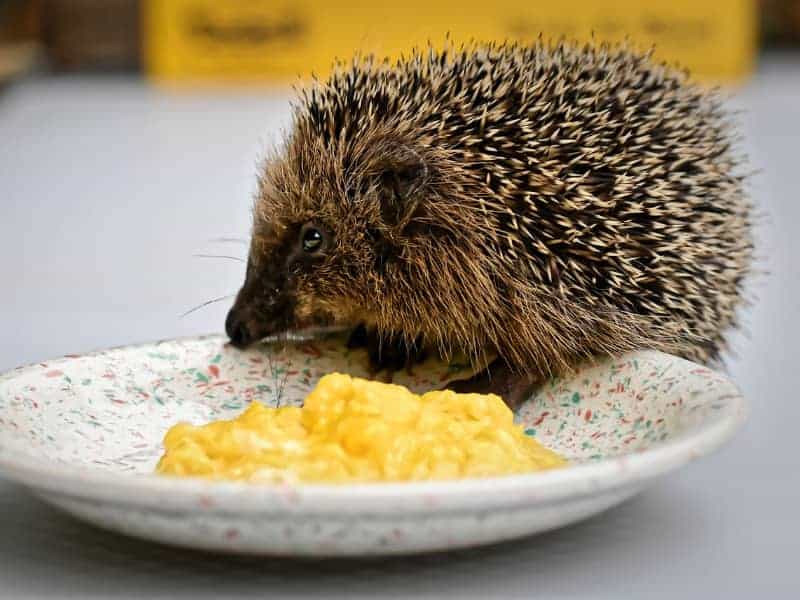
From mid-October, the supply of beetles and larvae becomes smaller and smaller. The young animals can then only eat a few grams per night.
Provide for winter fat
Older hedgehogs start building leaf-padded winter nests as early as September. You will find these mostly in weather-protected places in your garden, and is the most important part of the hedgehog year, so that the animal has a chance of survival. The building of the nest is usually done by the males, as the females are severely weakened by rearing the young. If you give them some cat food now, they will accept it gratefully. Sometimes it happens that young hedgehogs come in as well.
In November, especially the young hedgehogs are still looking for something to eat. The success is usually very low. Only their instinct tells them that they will survive the winter only with a good fat cushion. For this reason they often build their protective nest too late and often quite untidily. This is one of the reasons why so many hedgehogs do not survive the winter.
The nest building
From October to December at the latest, hedgehogs begin to build their nests, padded with leaves, in a place protected from the weather. Basically, the hedgehog makes few demands on his home. Enough food and a few hiding places, known as a day nest, are enough for him. In forest and meadow he usually does not find the right thing, which is why he often finds himself in parks, gardens and cemeteries.
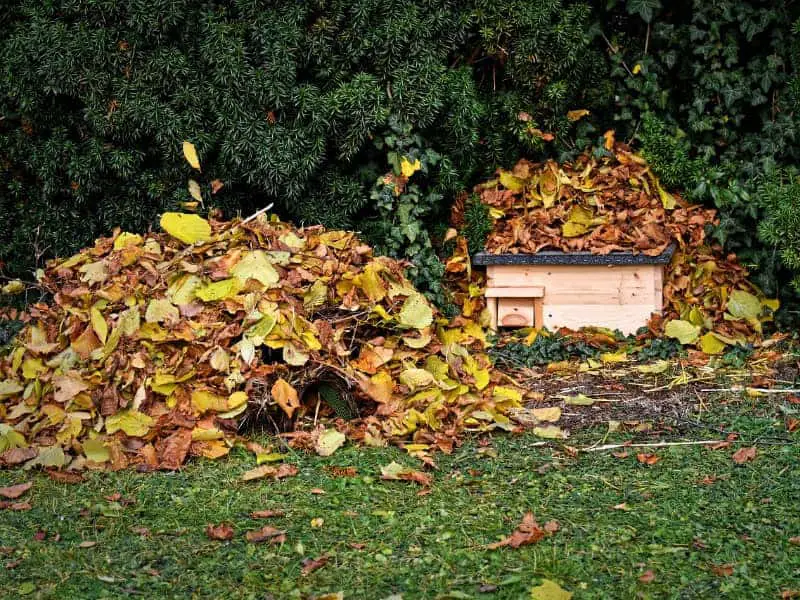
Hibernation, the beginning and the end of the hedgehog year
From November until March of the following year, the hedgehog hibernates. Its bodily functions are reduced to a minimum during this time. The body temperature drops from 36 degrees to about 5 degrees. Their heart rate of 180 to 250 beats per minute drops to 8 to 20 beats. Its breathing rate reduces from 40 to 50 breaths to 3 to 4.
The males usually begin their hibernation already at the beginning of November. While the females, depending on the weather longer active. The hedgehog wakes up again and again during his hibernation, but rarely leaves the safe nest.
Author

-
Garden animal - A life with nature
Welcome to my animal blog! My name is Dirk and I am happy to take you on my journey through the fascinating world of animals and gardening.
Born 54 years ago, I have had an insatiable curiosity for the animal world around me since childhood. Although I have moved professionally in other industries, my true passion has always been animals and nature. It is remarkable how a small garden has become such an important part of my life.
Many of my fondest memories are associated with the animals that share our home. Whether it's the curious squirrels that scurry across the trees in the morning, the colorful variety of birds that visit our feeders, or the busy bees and butterflies that pollinate our flowers, every moment with them is invaluable to me.
This blog is my contribution to share my experiences, discoveries and insights with like-minded people. Here I will share stories of unforgettable encounters with animals, give tips on gardening and creating wildlife-friendly habitats, and take you on my journeys through nature.
Thank you so much for being here!
Cordial,
Dirk aka garden animal
Last posts
- 27. February 2024PetsVeganes Hundefutter – Grün und Gesund?
- 18. January 2024ChickensOregano für Hühner
- November 27, 2023HamsterDiurnal hamsters
- November 24, 2023HamsterHamster hammock

